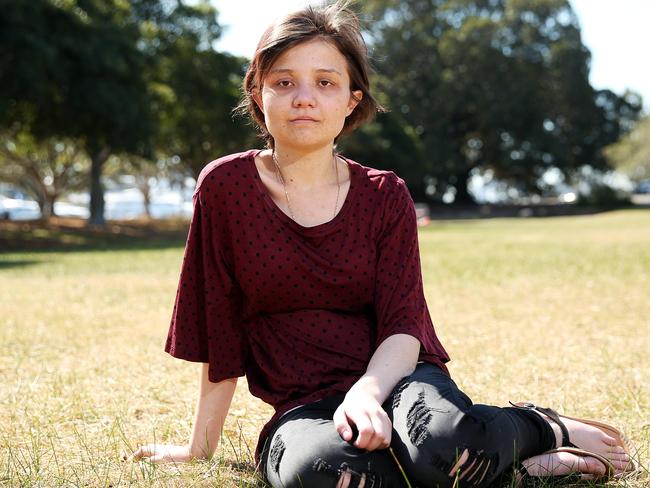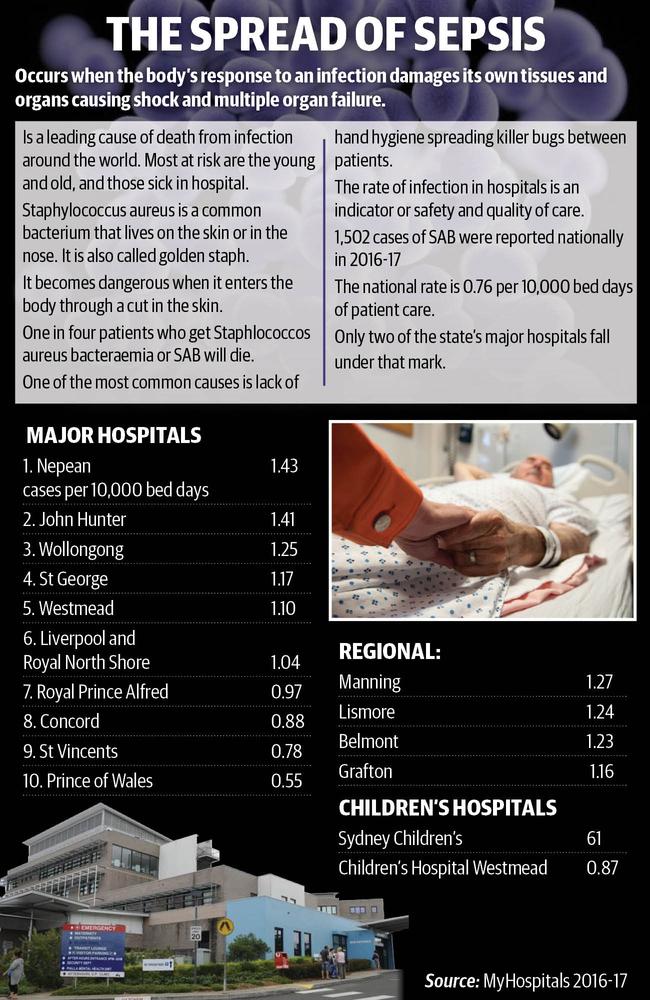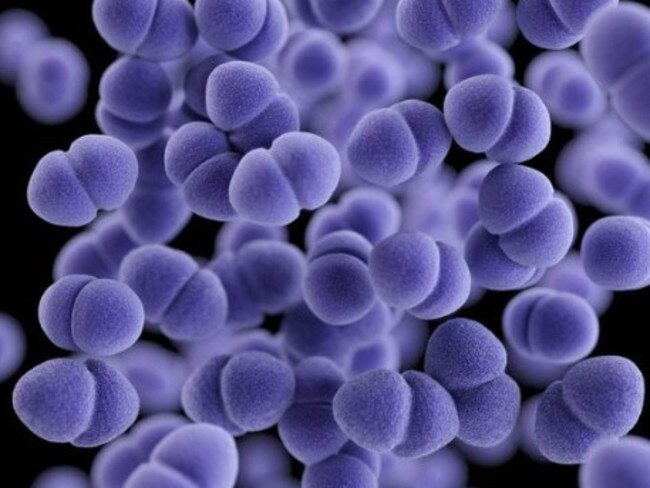Hospitals where you are more likely to contract sepsis infections
THOUSANDS of patient’s lives are put at risk every year from contracting an infection in hospital, like teenager Sarah Luscomebe — who almost died after contracting sepsis in a ward. We reveal the list of hospitals with higher rates of infections.

NSW
Don't miss out on the headlines from NSW. Followed categories will be added to My News.
GOING to hospital for a few hours each week almost killed 19-year-old Sarah Luscombe.
The port which delivered chemo drugs into her body to fight non-cancerous tumours in her pituitary gland and brain on one of her visits was infected.
As well as chemo drugs, it also delivered a bacterial blood infection — septicaemia.
“They told me I could die so I wrote a letter to my mum saying goodbye,” Ms Luscombe said.
“I was that unwell I wasn’t scared of dying, I wanted to because I could feel my body shutting down.”
Ms Luscombe was one of 493 patients who acquired septicaemia, often known as sepsis, from the Staphylococcus aureus bacteraemia (SAB) in public hospitals in NSW last year.
One in four die from the infection.

The national average infection rate for SAB is 0.76 cases per 10,000 days of patient care, but a Sunday Telegraph analysis of SAB figures shows most public hospitals in NSW exceed the national average, and some have double the rates of infection.
SAB incidence is an indicator of safety, cleanliness and quality of hospital care because it is largely preventable.
Nepean Hospital in Penrith has the highest rate of SAB in the state, with 1.43 cases, or 32 patients per 10,000 days of patient care, closely followed by John Hunter Hospital with 1.41 cases, or 36 patients per 10,000 days of patient care.
Of all the major hospitals, Wollongong, St George, Westmead, Liverpool, Royal North Shore, Royal Prince Alfred, Concord and St Vincent’s and the Children’s Hospital Westmead performed worse than the national average of 0.76.
Only the Prince of Wales Hospital and Sydney Children’s hospital had lower rates with 0.58 and 0.61 cases respectively.

Regional hospitals like Manning, Lismore, Belmont and Grafton also exceeded the national average.
Dr Kathryn Daveson from the Australian Commission on Safety and Quality in Health Care said initiatives like the National Hand Hygiene Initiative (NHHI) had helped reduce rates of SAB by 20 per cent in the past five years.
Health workers washing hands between patients has improved from 64 per cent to 84 per cent according to human audit of doctors and nurses.
However a recent study by the University of NSW found the handwashing compliance rates dropped by up to 55 per cent when auditors stopped physically monitoring health care workers.
MORE STORIES BY JANE HANSEN
CANCER SCREENING SYSTEM PUTTING LIVES AT RISK
TRANSPLANTS SAVE 11 LITTLE LIVES IN ONE ‘MAGIC’ MONTH
Infectious diseases expert Professor Mary-Louise McLaws said staff are vigilant when they know the auditors are watching.
“We electronically monitored staff 24 hours, seven days a week for two years and my study showed hand hygiene compliance is up to 55 per cent lower than the official rate so the human audit is methodically flawed,” she said.
Prof McLaws said St Vincent’s, which conducts heart and lung transplants, and Concord, which manages serious burns patients, have much lower rates of SAB despite the complexity of their patient care.
“These large teaching hospitals are doing well with complex patients, hospitals with less complex patients need to look at root cause. Hand hygiene is important but it’s not the be all and end all, but it is the best indicator,” Prof McLaws said.
Dr Kate Clezy, health care associated infections adviser to NSW Health’s Clinical Excellence Commission said the rate of a hospital’s infections could be linked to how many of its patients were vulnerable, like those with immune deficiencies.

But, she said, the good news was all NSW hospitals were under the national benchmark of two cases per 10,000 set a decade ago.
After Ms Luscombe, from Wentworth Park, was infected in October last year she had three blood transfusions and spent a month in hospital on intravenous antibiotics to treat four separate bugs in her blood.
She is still too fragile to recommence chemotherapy and has kidneys issues as a result. She had also been studying nursing but the experience has left her terrified of hospitals.
“I’m trying to keep positive but having sepsis has left me traumatised,” she said.
Several hospitals have been sued for medical negligence in recent years including one in North Sydney where a daughter got a $150,000 payout after her father developed SAB and died.
Surgery and treatment involving needles, catheters and cannulas where the skin is breached are all common causes of sepsis.
Any bacteria can cause sepsis, but one of the most common, and deadly, is staphylococcus aureus, which infected 1502 patients in 2016-17.
